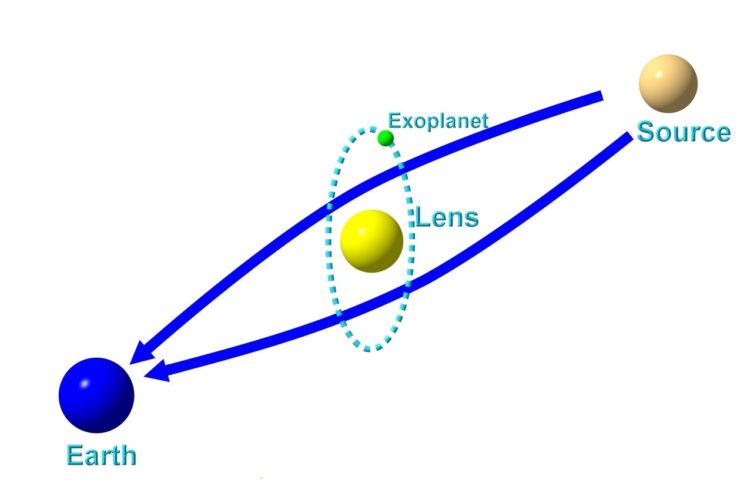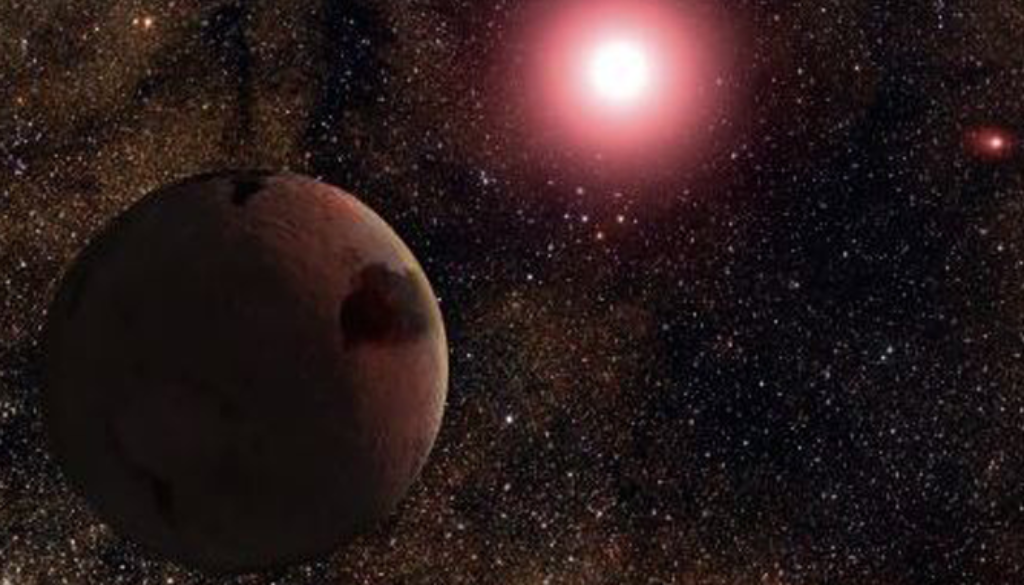DYNAMIC DUO: Astronomers Detect Cold, Earth-Like Planet Orbiting Dim, Sun-Like Star
An international team of astronomers has discovered a new exoplanet orbiting just one star in a two-star system — a dynamic duo not only strikingly similar to our Earth and Sun but also key to the continuing evolution of planetary formation science.
The team’s research, published today in the July 4 edition of Science, details a planet twice the mass of Earth and similar in its orbit as the primary component of a relatively close binary system, which typically involves two stars orbiting each other as a pair, according to Texas A&M University astronomer and exoplanet expert Darren DePoy.
“The planet is interesting because of the similarity with its mass and orbit relative to its star being about the same as ours,” DePoy said. “Because the star is much less luminous than the Sun, however, the planet is cold.”


DePoy says the planet, called OGLE-2013-BLG-0341LBb, is in the Milky Way Galaxy, in the disk about halfway to the center and quite a long way off — about 3,000 light-years from Earth.
“We are observing the target with the Spitzer Space Telescope, which should allow us to determine a more precise distance, given that the satellite is relatively far from the Earth and has a different perspective on the event,” he added.
DePoy, director of Texas A&M’s Charles R. ’62 and Judith G. Munnerlyn Astronomical Instrumentation Laboratory and a member of the George P. and Cynthia Woods Mitchell Institute for Fundamental Physics and Astronomy, helped set up the team’s observational network and build the instrumentation used for their measurements. He joined the Texas A&M faculty in 2008 as holder of the Rachal-Mitchell-Heep Endowed Professorship in the Department of Physics and Astronomy after an 18-year career at Ohio State University, home of the paper’s lead author, Andrew Gould.
While DePoy admits there are other “similar to Earth” systems in the universe (“although not many,” he is quick to add), he says this finding is unusual and unprecedented due to the new light it sheds on previous planetary formation models.
“Theory used to predict planets wouldn’t form in binaries, because the two stars would disrupt the material from which planets could form by not allowing that material to condense and to gravitate together,” DePoy said. “This more or less demonstrates that is incorrect and gives the theorists something to think about.”
When searching for planets and other such large bodies in deep space, astronomers rely on a technique called microlensing, which DePoy explains is an observable phenomenon that occurs when light from a star that is very far away is bent toward us, courtesy of other stars closer to us. For this particular study, the team used gravitational microlensing, which allows low-mass exoplanets to be detected at large distances, regardless of the amount of light they emit. They obtained their data from a series of worldwide gravitational microlensing events as observed by astronomers at facilities across Australia, Chile, Japan, Korea and New Zealand.
DePoy describes the discovery as nothing short of a world wonder — the direct result of joint scholarly effort funded in part by the National Science Foundation and NASA, among others, and the pooled resources of four global microlensing survey groups: Gould’s Ohio State-based Microlensing Follow Up Network (MicroFUN); the Warsaw-based Optical Gravitational Lens Experiment (OGLE) Team at Las Companas in Chile; the Microlensing Observations in Astrophysics (MOA) Team in New Zealand; and the Wise Observatory Team in Israel. Three dozen scientists affiliated with nine international observatories and more than 20 international universities (including only two U.S.-based institutions other than Texas A&M and Ohio State — Harvard University and the University of Notre Dame) were involved in the collaborative worldwide feat.
“One of the best things about astronomy is its worldwide nature,” DePoy said. “My contribution to all of this was to help get the instruments in place on telescopes of many different sizes around the world, from little digital cameras on small amateur telescopes in New Zealand to large sophisticated multi-color imagers at professional telescopes in Chile. We have since expanded this sort of activity to other arenas, and we now have Texas A&M students looking for planets — using transits, not microlensing — in very young regions of our Milky Way Galaxy, for example.”
As for the broader collaborative context for Texas A&M Astronomy, DePoy says the future is universally bright, from the potential projects to eventual groundbreaking discoveries.
“Just last week, six of us from Texas A&M were at an international astronomical instrumentation conference in Montreal, where roughly 3,000 people from all over the world met to discuss ongoing and future projects,” DePoy said. “One of [Munnerlyn Lab manager and senior research scientist] Jennifer Marshall’s presentations involving several undergraduates who helped with the project was among the most popular pieces of work at the conference. The Giant Magellan Telescope [for which Texas A&M is one of 10 partners] went over very well, too.”
To learn more about the Munnerlyn Astronomical Laboratory and related research projects, visit http://instrumentation.tamu.edu/.
# # # # # # # # # #
About Research at Texas A&M University: As one of the world’s leading research institutions, Texas A&M is in the vanguard in making significant contributions to the storehouse of knowledge, including that of science and technology. Research conducted at Texas A&M represents annual expenditures of more than $820 million. That research creates new knowledge that provides basic, fundamental and applied contributions resulting in many cases in economic benefits to the state, nation and world. To learn more, visit http://research.tamu.edu.
Watch a related video simulation by io9 contributing editor George Dvorsky on YouTube:
-aTm-
Contact: Shana K. Hutchins, (979) 862-1237 or shutchins@science.tamu.edu or Dr. Darren DePoy, (979) 862-2082 or depoy@physics.tamu.edu
The post DYNAMIC DUO: Astronomers Detect Cold, Earth-Like Planet Orbiting Dim, Sun-Like Star appeared first on Texas A&M College of Science
